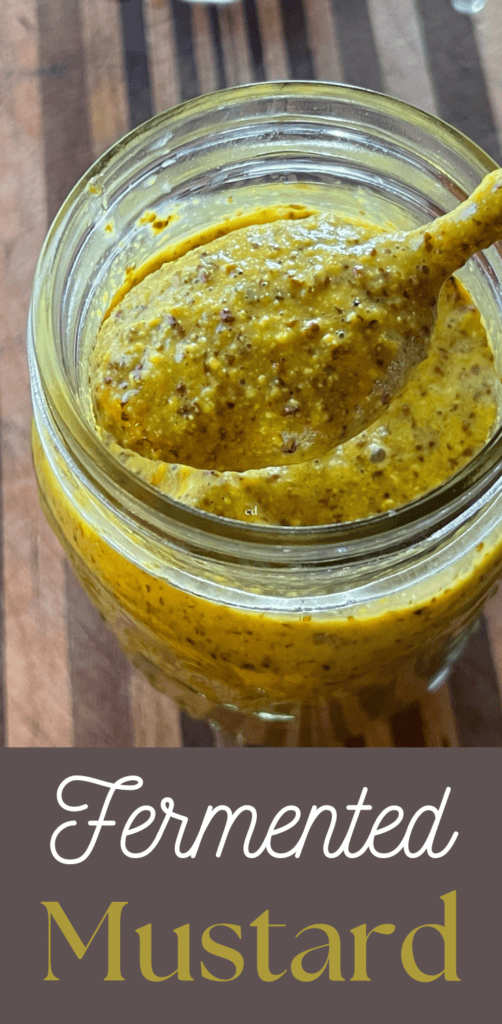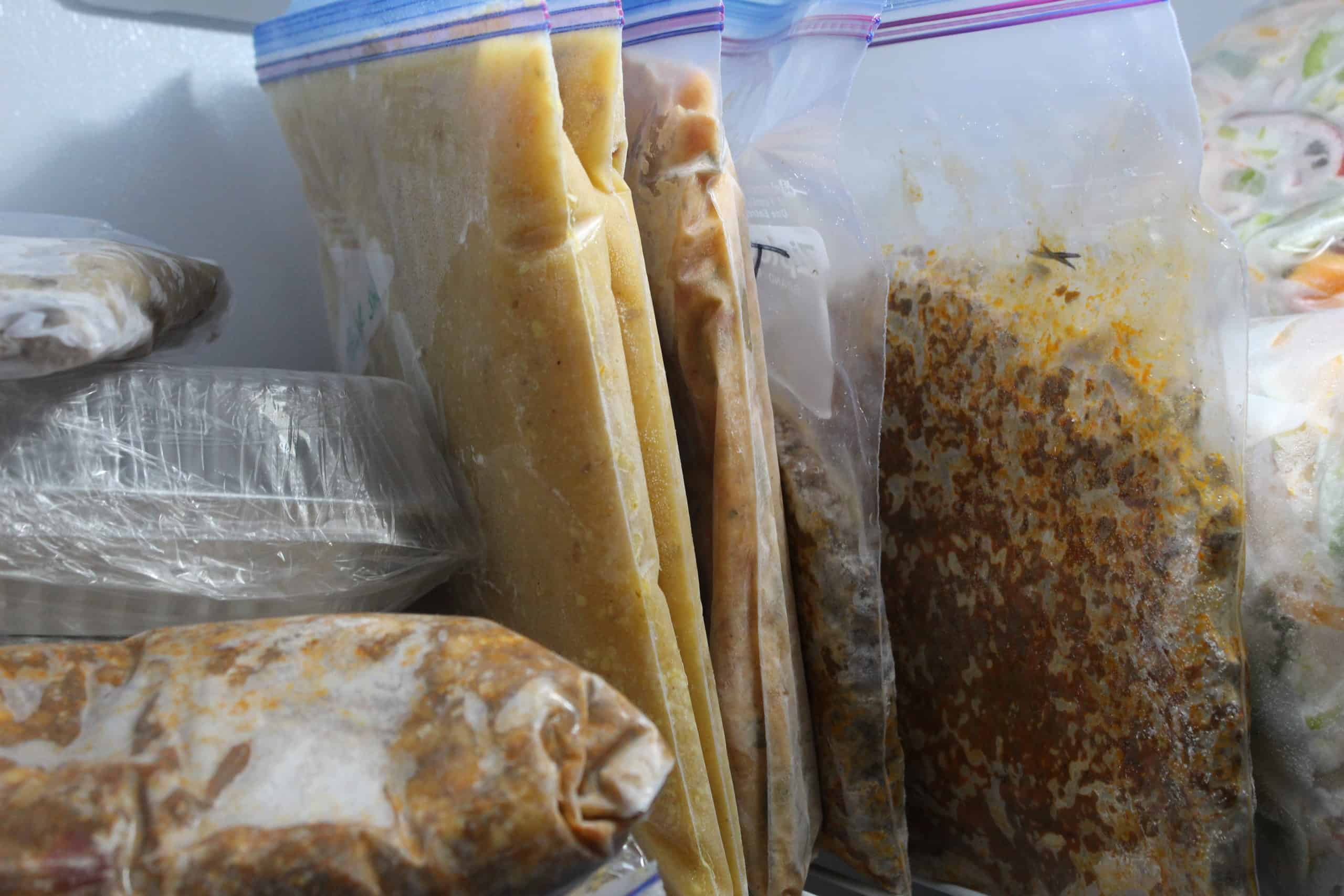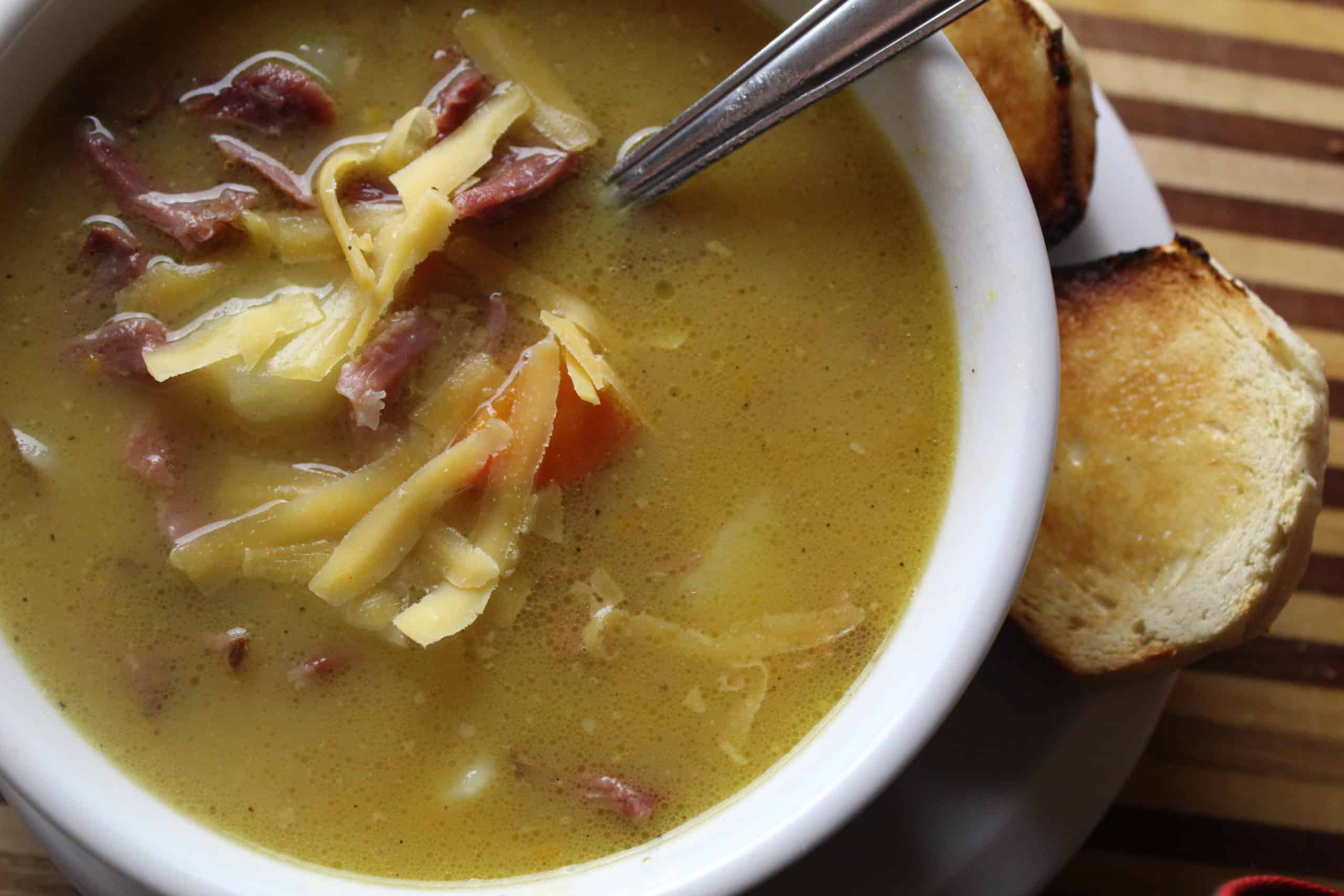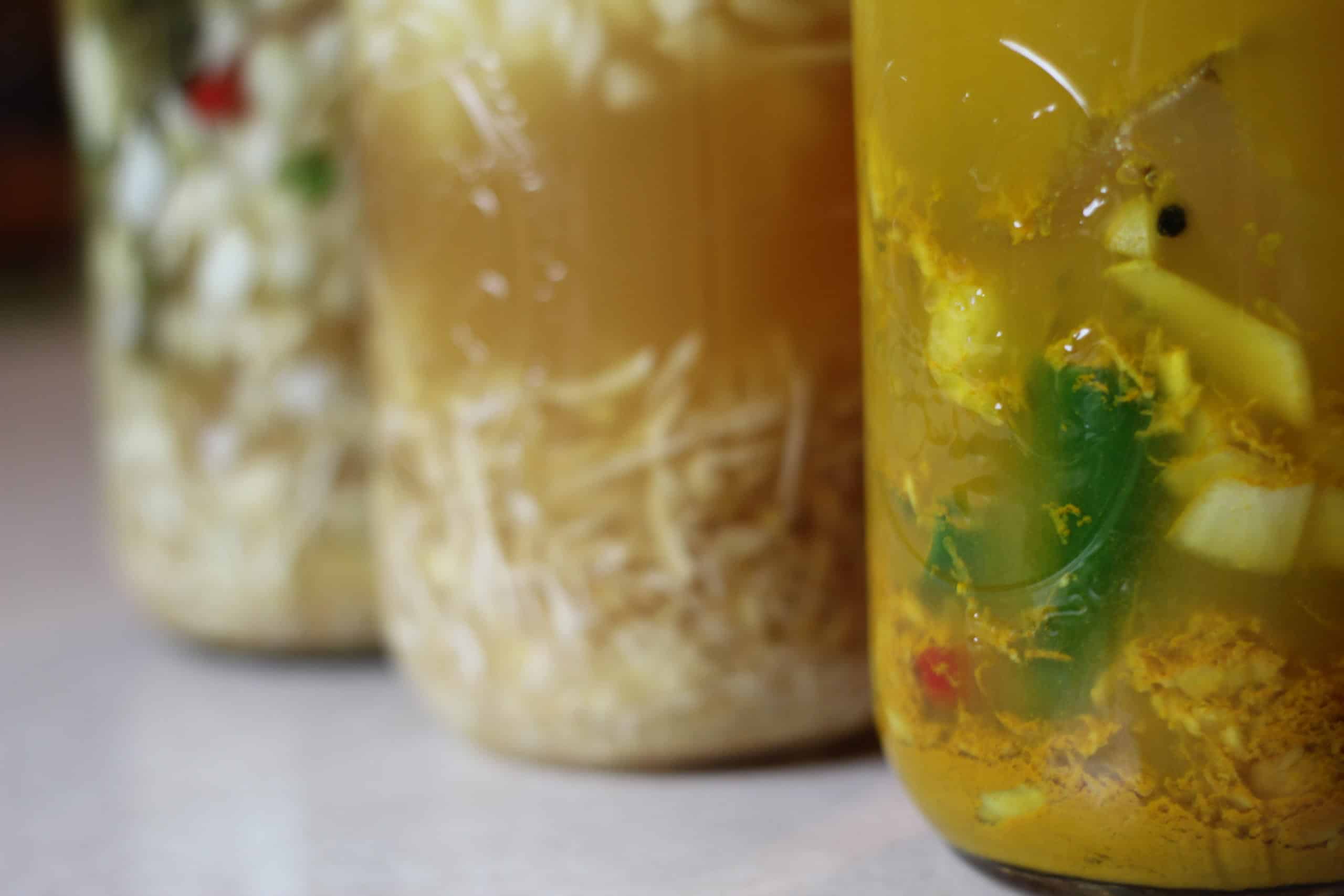Homemade Fermented Mustard
This simple recipe for homemade fermented mustard is a fun fermentation project that also makes for great gifts!
What is Fermented Mustard?
Fermented mustard is a mix of mustard seeds, spices, vinegar, water, and a sweetener, that has been allowed to sit and ferment for several days. This gives it a rich, tangy flavor that is delicious on hot dogs, in salad dressings, etc. You may also hear it referred to as lacto-fermented mustard.

This post contains affiliate links, which means I make a small commission at no extra cost to you. See my full disclosure here.
Ingredients for Homemade Fermented Mustard
- 1/4 Brown Mustard Seeds
- 1/4 Yellow Mustard Seeds (for a spicier mustard) OR White Mustard Seeds (for a more mild mustard)
- 1 Teaspoon Dried Turmeric
- 1/4 Cup Raw Apple Cider Vinegar
- 1 Cup Unchlorinated Water
- 2 Teaspoons Salt
- Sweetener to taste (see the sweetener section for ideas)
Supplies
- Pint Jar (I prefer wide mouth jars to regular for this, easier to scoop)
- Lid
- Blender or Food Processor
- Rubber Spatula
How to Make Easy Homemade Fermented Mustard
Blend it Up!
Begin by adding the white and brown mustard seeds, salt, turmeric, and one cup of water to a blender or food processor. Run your machine until everything is smooth. This will take 1-2 full minutes of blending.
You want a goopy, mustard like consistency. This will take a while as those tiny seeds need to get broken down.
If you do a shorter blend time you will have a texture closer to a whole-grain mustard. If you over blend, you can toss in a tablespoon or so of whole seeds after blending.
If you do not have a blender or food processor it is possible to hand make the mustard by smashing and grinding the ingredients in a mortar and pestle or similar. If that is your situation, I would recommend smooshing up the seeds first to get them broken up, then add in the other ingredients.
Add to Jar
Use the rubber spatula to scoop all the blended mixture into a pint mason jar.
If there are any big air bubbles, use a toothpick to release the air bubbles. If there are some smaller ones, gently tap the mason jar on your countertop until the bubbles work their way out.
Cover the jar with a lid and tighten. You will want tight-fitting lids, not something open on top like most ferments.

Ferment
Let the mustard mixture set out at room temperature out of direct sunlight, somewhere ideally around 70 degrees, to ferment for three days. If it is cooler in your house leave them out for a few extra days. If your house is warmer, then it might go through the fermentation process more quickly so keep an eye on it.
After three or so days, stir in the apple cider vinegar and your sweetener to taste. I like to do about two tablespoons of honey.
Your mustard is ready to go! Taste it and see if you want to add anything into it. Maybe a little more salt? A dash more sweetener? Explore your mustard recipe until it is music to your taste buds.
Types of Mustard Seeds
All mustard seeds come from a mustard plant, which is in the brassica family. The seed is a result of the bright yellow flower. Those delicious mustard greens you enjoy in your salads? If they were left to mature and bolt, they would produce a mustard seed.
For this recipe you want whole mustard seeds. The Spruce Eats has a thorough article on the different types of mustard seeds. Here is a quick rundown of the most popular.

Brown Mustard
If a dijon mustard is your goal, brown mustard is where it is at. Brown is a little bitter, but also has a nice spice.
Black Mustard
Found primarily in Middle Eastern cooking, black mustard is the most pungent and will give the most kick to your recipes. It is much less common as it requires hand harvesting.
Yellow Mustard
Sometimes this is seen as interchangeable with white, though from what I have read yellow is slightly spicier than a white mustard seed. Yellow Mustard seeds are found more frequently in Indian cooking. It is the same seed as white mustard but just a different variety of it.
White Mustard
The mildest of the mustards, this is a great all purpose option that is most popular in European cooking. It is the same as a yellow mustard seed technically, but a different variety of it.
Sweeteners for Homemade Mustard
There are a few great options for sweetening your mustard. Maple syrup will give a very distinct flavor. Raw honey will give you more of a honey mustard flavor. Brown sugar gives a richer taste. Plain white sugar will give you a straightforward sweetness without much complexity. Still tasty though! Which you will like best depends on your own personal tastes.
Variations on the Recipe
In addition to trying different sweeteners, you can try different vinegars. Experiment with white wine vinegar or lemon juice instead of apple cider vinegar. Red wine vinegar combined with brown sugar will get you a flavor closer to a dijon mustard. If you really want to try something zingy add in sauerkraut juice or pickle brine instead of vinegar!
You can also experiment with different herbs during the fermentation process. Cloves, allspice, black pepper, onion or garlic powder, etc. Play around with the recipe until you find that perfect mustard.
Storing Mustard
Keep your mustard in the refrigerator and use within the year. Or better yet, scoop some out into smaller jars and distribute to your friends and friends and family. What else says love better than a handmade gift that is useful too?
Source
This recipe originally came from an issue of Taproot Magazine. It’s a wonderful publication if you haven’t checked it out before. The author of the article is Kirsten Shockey. She has a lot of great books on Fermentation including Fiery Ferments and Fermented Vegetables. If you are new to Fermentation I would definitely check out Fermented Vegetables!
Watch and Learn
For all my fellow visual learners out there here is the entire mustard making process step by step!
Pin it for later

Want more Fermentation recipes?
We love Fermentation over at our farmhouse so we are stocked up with a ton of beginner friendly recipes that will keep your gut healthy and keep your kitchen smelling zesty.








If I wanted to do lemon juice would I add the same amount as the vinegar?
Thanks!
I’d start with a few tablespoons, stir it up, taste, and add more as you like for taste/texture.